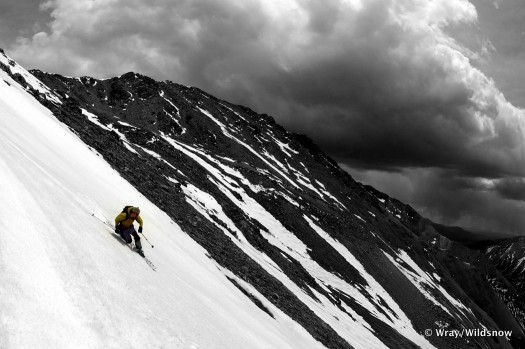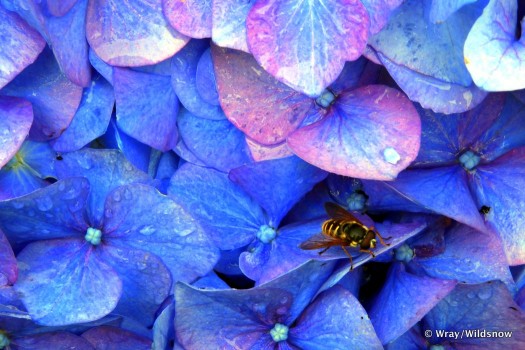Most sane folks are practical enough to leave the camera at home on storm days, but those of us with the highly contagious shutter bug would never consider it.

A photo taken in haste to beat a summer storm during a backcountry skiing adventure. 8mm f/6.3 1/600th ISO 100.
Images are easy for most photographers in places such as Montana, Colorado, Wyoming. Weather in those “high desert” states is statistically clear and dry (as we know all too well from our thinner snowpacks), and photography is easy. However, I travel and come from an area that averages 60 inches of precipitation a year. The east facing Appalachian slopes could technically be considered a tropical rainforest if not for its northern latitude. Thus I have been forced to learn a thing or two about photographing on overcast and often wet days.
The images of friends moving through an alpine environment with dark storm clouds looming in the background can be interesting (thunderstorms and snow offer amazing contrast), but they are packaged with a high danger factor and the flat light often washes the photo.
When the bright sun eludes me, my first instinct is to turn my interests towards macro. Close ups of people, pets, petals, and pebbles are fantastic. Many folks don’t realize that brilliant colors spring to life in the macro format with overcast skies. It’s like having a gigantic commercial lightbox such as the ones once used for automobile advertising images.

Very little post production was needed for this photo. It was taken in Ireland on a common dreary day. Capturing this shot was particularly challenging given that my wife and friends were verbally baiting me to move on from standing under an umbrella, fumbling with my camera, in the pouring rain. 60mm f/22 1/5th ISO 400.
On overcast days, I pack two important tools not necessarily present on other sojourns: an umbrella or extra waterproof shell and a cumbersome tripod. Use the water protection because that is the leading cause of death for cameras and the larger tripod because a light tripod is frequently too shaky (though adding weight to a tripod by hanging a stuffsack full of junk can improve stability). When producing quality close-up images, a high f-stop is required because deep depth of field is important (meaning that nearly everything should be in focus, rather than a close point being in focus with the rest blurred). However the tradeoff with a high f-stop is an even slower shutter speed, hence the tripod (even with the high tech image stabilization systems in modern cameras, hand holding a shutter speed slower than 1/30th is nearly impossible unless you’re using a wide angle lens and taking sedatives).
Furthermore on the point of f-stops, most camera/lens setups produce the best images with the least distortion around f/8, but I try to cheat that upwards to the mid-teens in macro situations and use a little wider focus than what visually appeals to me, only to crop during post production. This technique seems to yield my best results.
The true conundrum of storm day photography is that when skiing is incredible, photography is at its most difficult. In a recent trip to Japan this point came into full focus. Snow was falling, untracked and deep, day after day. My photography instincts urged me to shoot as much as possible but the conditions were anything but ideal. So after many sessions of trial and error I resigned myself to the fact of impossibly slow shutter speeds. It became obvious that the best images would result from upping the ISO slightly and either capturing a crisp background with a blurred skier or following the skier and blurring the background (I never like to increase the ISO beyond 400 because most cameras that we amateurs can afford produce significant graininess beyond this point). Without artificial light, which I am neither proficient with or a fan of, these were my only options. The two techniques still produced nice images, though not quite capturing the total essence of the moments in my opinion.

Here is an example of an in focus skier on a blurred background during a storm day. 8mm f/8 1/400th ISO 200.

Another example of the tradeoffs when natural light is not optimal. Blurred skier vs a sharp background. 8mm f/8 1/320th ISO 200.
That’s my take on photography in “full conditions,” I hope you all enjoy — please share any stormy photography tricks in the comments.
WildSnow guest blogger Caleb Wray is a photographer and outdoor adventurer who lives in Colorado and travels worldwide. He enjoys everything from backcountry skiing to surfing.
